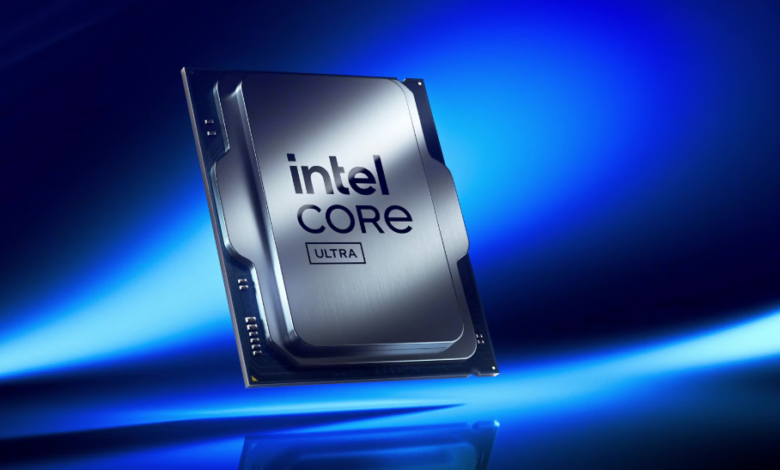Intel Surges Over 9.5% Amid Breakup Plans By TSMC And Broadcom

Intel shares jumped over 9.5% following reports that Taiwan Semiconductor Manufacturing Co. (TSMC) and Broadcom are considering separate deals that could split the American chip giant into two entities. This dramatic development marks a potentially transformative moment for the semiconductor industry, pointing to both Intel’s recent struggles and the evolving landscape of global chip manufacturing.

Key Points:
- Broadcom examining Intel’s chip-design and marketing business
- TSMC considering control of some or all of Intel’s manufacturing facilities
- Talks are preliminary with no formal offers submitted
- U.S. government approval would be required for any deal
Proposed Structure
The proposed break-up would create two distinct operations from Intel’s current structure. Broadcom has been exploring acquisition of the chip-design and marketing business, while TSMC has studied taking control of Intel’s manufacturing facilities, potentially as part of an investor consortium. Both companies are working independently, and discussions remain in early stages with no formal offers submitted to Intel’s board.
Regulatory Landscape
The situation has drawn significant attention from the Trump administration, with Intel’s interim executive chairman Frank Yeary leading discussions with possible suitors and government officials. The White House has indicated the president would likely oppose any deal involving foreign control of Intel’s factories, given the company’s critical role in national security. This stance adds complexity to any potential agreement, particularly regarding TSMC’s involvement.
Manufacturing Challenges
The manufacturing aspect of the deal faces substantial operational challenges. Retooling Intel’s factories to align with TSMC’s specifications would require significant investment and engineering expertise. Immigration restrictions could hamper TSMC’s ability to deploy their engineers in the U.S., as many of their technical staff come from Taiwan and other regions outside America. Additionally, Intel’s recent CHIPS Act funding comes with requirements to maintain majority ownership of manufacturing facilities, further complicating any potential deal structure.
Market Context
Intel’s openness to such dramatic changes follows a challenging period for the company. Their share price declined approximately 60% in 2024, leading to CEO Pat Gelsinger’s departure in December. The company has struggled to keep pace with TSMC in advanced chip manufacturing and largely missed out on the artificial intelligence boom dominated by Nvidia. Increasing competition from Advanced Micro Devices in their core processor business has further eroded their market position.
Analyst Perspectives
Analysts have offered mixed perspectives on the potential deals. Bloomberg Intelligence analyst Charles Shum warns that TSMC risks its profitability and competitive edge if it invests in Intel’s U.S. fabrication plants, citing integration challenges and delayed profitability until 2027. Cantor Fitzgerald analyst C.J. Muse takes a more optimistic view, suggesting that the persistent rumors of a split between design and manufacturing operations likely have substance.
Current Preparations
Intel has already begun preparing for potential structural changes. The company recently began operating its factories as though they were separate entities, accepting orders from both internal design teams and external customers equally. Financial results for the manufacturing division are now reported separately, and plans are in place to establish a subsidiary with its own operating board of directors. This reorganization could facilitate outside investment in the manufacturing operations, whether from customers or private equity players.
Intel (D1 Interval)
The stock is trading above the 200-day SMA and is currently approaching November’s high. Bulls will aim to close the gap from August at $29, while bears will target a retest of the 100-day SMA at $21.98. The RSI is making higher highs in the overbought zone, while the MACD continues to widen, indicating strong momentum.

The material on this page does not constitute financial advice and does not take into account your level of understanding, investment objectives, financial situation or any other specific needs. All information provided, including opinions, market research, mathematical results and technical analyzes published on the Website or transmitted To you by other means, it is provided for information purposes only and should in no way be construed as an offer or solicitation for a transaction in any financial instrument, nor should the information provided be construed as advice of a legal or financial nature on which any investment decisions you make should be based exclusively To your level of understanding, investment objectives, financial situation, or other specific needs, any decision to act on the information published on the Website or sent to you by other means is entirely at your own risk if you In doubt or unsure about your understanding of a particular product, instrument, service or transaction, you should seek professional or legal advice before trading. Investing in CFDs carries a high level of risk, as they are leveraged products and have small movements Often the market can result in much larger movements in the value of your investment, and this can work against you or in your favor. Please ensure you fully understand the risks involved, taking into account investments objectives and level of experience, before trading and, if necessary, seek independent advice.





